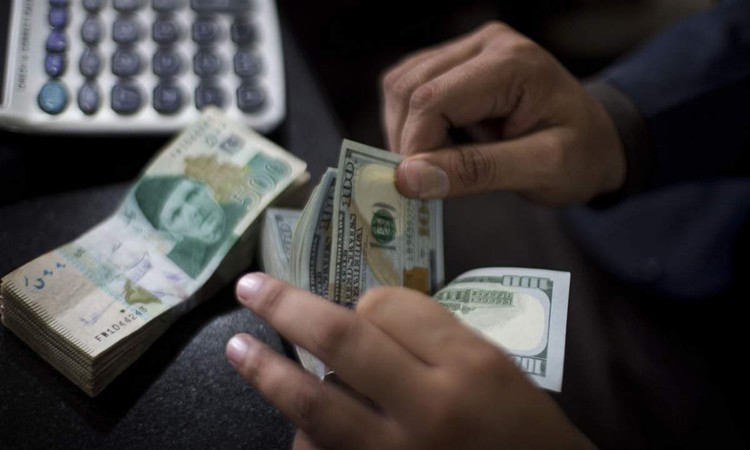
The government has devaluated rupee up to 40 percent in less than a year which has hit the business sector hard

The value of rupee as against the US Dollar in December 2017 was Rs105. It has risen to Rs143 these days. It is stated to be the sixth currency devaluation since December 2017.
Economists believe factors like dwindling forex reserves, trade deficit, less manufacturing, growing imports, and political and economic uncertainty are keeping the rupee under great stress.
However, in October 2018, officials of the State Bank of Pakistan (SBP) informed the Senate Standing Committee on Finance, Revenue, and Economic Affairs presided over by Senator Farooq H. Naik that depreciation of Pak rupee would help boost the country’s foreign exchange reserves with increase in exports and foreign remittances, and decline in imports, and current account deficit.
The SBP officials claimed that sharp devaluation of rupee injected a new life into the country’s economy because such policy increased foreign remittances by 13 percent, trade deficit narrowed by 1.6 percent and current account deficit shrank by 2.6 percent. In addition, the official said the real positive outcome would be felt in about a year.
Pakistan Bureau of Statistics shows that inflation rate in October 2018 was 6.78 percent which was 3.68 in April 2018. Contrary to the claims of SBP, inflation kept on increasing to 9.41 in March 2019 -- the highest rate since November 2013.
Normally, governments apply three kinds of theories to justify their step of devaluating the currency: to boost exports, to shrink trade deficits, and to reduce sovereign debt burdens. According to this theory, exports are encouraged while imports discouraged. This happens because exports become cheaper and imports more expensive; it also favours an improved balance of payments trade deficit shrinks.
Through devaluation a government may be incentivised to encourage a weak currency policy if it has a lot of government-issued sovereign debt to service on a regular basis. If debt payments are fixed, a weaker currency makes these payments effectively less expensive over time. For instance, if the domestic currency is devalued to half of its initial value, the $1 million debt payment will only be worth $500,000.
Chairman Pakistan Industrial & Traders Association Front (PIAF), Mian Nauman Kabir, challenges the claims made by officials of State Bank of Pakistan that devaluation would help in different ways. "Devaluation of the rupee failed to stimulate exports during the first five months (July-November) of the financial year 2018-19, as they grew by a meagre 1 percent to $9.12 billion against $9.04 billion in the same period last year. Moreover, there is a minor decrease in trade deficit in the last four months from Rs371.6 billion to 317.4 billion".
The inflation ratio is uncontrollable as prices increased for food & non-alcoholic beverages up to 8.22 percent; furniture & household equipment 9.51 percent; other goods & services 10.18 percent; recreation & culture 9.66 percent, clothing & footwear 7.21 percent, health 8.08 percent and restaurants & hotels 6.47 percent, he informs.
Former President Lahore Chamber of Commerce & Industry, Irfan Qaiser Sheikh, calls the devaluation policy nothing but a disaster for all sectors. People have lost Rs98 billion in a day when the current deflation policy hit the market. Devaluing of the currency cannot help boost exports but increases inflation and make the life of common people miserable.
"The government has devaluated rupee up to 40 percent in less than a year which has practically washed out the business sector in the country. Due to such policies, the International Monetary Fund (IMF) has predicted that Pakistan’s GDP growth rate will be reduced to 2.9 percent while inflation and unemployment will go up," he says.
World Economic Outlook 2019 states that unemployment in Pakistan will rise to 6.2 percent in the next fiscal year from the current 6.1 percent. However, the current account deficit is likely to go down to 4.3 percent in 2020 from the projected 5.2 percent during the on-going fiscal year.
President Forex Association of Pakistan, Malik Bostan, believes the policies of devaluating currency and reducing the ratio of subsidies on various services would certainly help the government to increase exports, decrease imports and collect more revenue and the outcome of all these efforts would bring down the trade deficit.
Irfan Qaiser Sheikh criticises the government, saying government’s policies do not favour investment in the manufacturing industry. "Devaluation means imports such as petrol, food and raw materials will become more expensive; this will reduce productivity of the manufacturing industry. Albeit, we should go for higher exports and lower imports, which is a definite way of reducing the current account deficit".
According to Nauman Kabir, devaluation can cause a decrease in real wages. This is because devaluation causes inflation. "Besides, devaluation increases debt burden of foreign-denominated loans when priced in the home currency. This is a big problem for a developing country like Pakistan as ongoing deficits are unsustainable in the long run and can lead to dangerous levels of debt which can cripple an economy. About 22 percent of our manufacturing industries have closed down because of the devaluation policy of the current government."
Also read: Editorial
Former United Nations Assistant Secretary General and Federal Minister for Finance and Economic Affairs, Dr. Hafiz A. Pasha, writes in his book, Growth and Inequality in Pakistan; Agenda for Reforms published in April 2019 that "The loss of export competitiveness of manufacturing sector of Pakistan has to be restored by maintaining the exchange rate at its true value and not allowing it to appreciate. Since domestic electricity and gas tariffs are above world prices the difference may be reflected in the duty drawback regime".
He also points out that "Pakistan fares very poorly in the international ranking of Ease of Doing Business. It stands at 136 out of 190 countries with a significant improvement of 11 places in 2018. The setting up a new entity requires ease of establishing and doing a business."